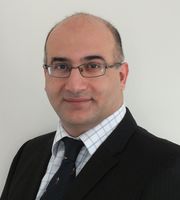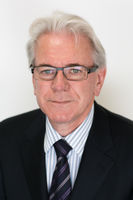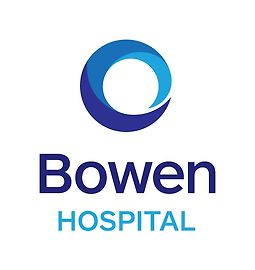Wellington > Private Hospitals & Specialists > Evolution Healthcare >
Bowen Hospital - Endoscopy
Private Surgical Service, Endoscopy (Gastroenterology), Respiratory, General Surgery, Gastroenterology
Description
Bowen’s modern, conveniently located private surgical hospital offers the best in private healthcare services Wellington has to offer. With our team of highly trained and dedicated medical specialists, and the very latest in equipment and techniques, we have a proud reputation for the quality of our care.
Private healthcare allows choice, flexibility and access to specialists who use the latest techniques in treatment. You are free to nominate your specialist and can expect your consultation and treatment in a timely manner without waiting list restrictions. Early treatment and intervention is often pivotal in ensuring the best outcome for patients.
Consultants
-

Dr Chris Cederwall
Gastroenterologist
-

Dr Caroline Di Jiang
Gastroenterologist
-

Dr Magdalena Metzner
Gastroenterologist
-

Mr Thomas Morgan
General Surgeon
-

Dr Ali Shekouh
General Surgeon
-

Dr Nicola Smith
Respiratory Physician
-

Dr John Wyeth
Gastroenterologist
Procedures / Treatments
Endoscopy is the process of looking inside body cavities, using a very tiny camera attached to the end of a long, flexible tube (endoscope). Images from the camera are sent to a television monitor so that the doctor can direct the movement of the endoscope. It is also possible to pass different instruments through the endoscope to allow small samples or growths to be removed. Endoscopy allows a doctor to make a diagnosis either by seeing directly what is causing the problem or by taking a small tissue sample for examination under a microscope (biopsy). Endoscopy can also be used as a treatment e.g. for removal of swallowed objects in the oesophagus (food pipe), healing of lesions etc.
Endoscopy is the process of looking inside body cavities, using a very tiny camera attached to the end of a long, flexible tube (endoscope). Images from the camera are sent to a television monitor so that the doctor can direct the movement of the endoscope. It is also possible to pass different instruments through the endoscope to allow small samples or growths to be removed. Endoscopy allows a doctor to make a diagnosis either by seeing directly what is causing the problem or by taking a small tissue sample for examination under a microscope (biopsy). Endoscopy can also be used as a treatment e.g. for removal of swallowed objects in the oesophagus (food pipe), healing of lesions etc.
Endoscopy is the process of looking inside body cavities, using a very tiny camera attached to the end of a long, flexible tube (endoscope). Images from the camera are sent to a television monitor so that the doctor can direct the movement of the endoscope. It is also possible to pass different instruments through the endoscope to allow small samples or growths to be removed.
Endoscopy allows a doctor to make a diagnosis either by seeing directly what is causing the problem or by taking a small tissue sample for examination under a microscope (biopsy).
Endoscopy can also be used as a treatment e.g. for removal of swallowed objects in the oesophagus (food pipe), healing of lesions etc.
Colonoscopy is the examination of your colon (large bowel) using a colonoscope (long, flexible tube with a camera on the end). The colonoscope is passed into your rectum (bottom) and then moved slowly along the entire colon, while images from the camera are displayed on a television monitor. The procedure takes from 10 minutes to an hour. Sometimes a small tissue sample (biopsy) will need to be taken during the procedure for later examination at a laboratory. A colonoscopy may help diagnose conditions such as polyps (small growths of tissue projecting into the bowel), tumours, ulcerative colitis (inflammation of the colon) and diverticulitis (inflammation of sacs that form on the walls of the colon). Colonoscopy may also be used to remove polyps in the colon. Risks of a colonoscopy are rare but include: bleeding if a biopsy is performed; allergic reaction to the sedative; perforation (tearing) of the bowel wall. What to expect It is important that the bowel is completely empty before the procedure takes place. This means that you will only be able to have liquids on the day before, and will probably have to take some oral laxative medication (to make you go to the toilet more). When you are ready for the procedure, you will be given medication (a sedative) to make you go into a light sleep. This will be given by an injection into a vein in your arm or hand. The colonoscopy will usually take 15 – 30 minutes, but you will probably sleep for another 30 minutes. Because you have been sedated (given medication to make you sleep) it is important that you arrange for someone else to drive you home. Some patients may experience discomfort after the procedure, due to air remaining in the colon.
Colonoscopy is the examination of your colon (large bowel) using a colonoscope (long, flexible tube with a camera on the end). The colonoscope is passed into your rectum (bottom) and then moved slowly along the entire colon, while images from the camera are displayed on a television monitor. The procedure takes from 10 minutes to an hour. Sometimes a small tissue sample (biopsy) will need to be taken during the procedure for later examination at a laboratory. A colonoscopy may help diagnose conditions such as polyps (small growths of tissue projecting into the bowel), tumours, ulcerative colitis (inflammation of the colon) and diverticulitis (inflammation of sacs that form on the walls of the colon). Colonoscopy may also be used to remove polyps in the colon. Risks of a colonoscopy are rare but include: bleeding if a biopsy is performed; allergic reaction to the sedative; perforation (tearing) of the bowel wall. What to expect It is important that the bowel is completely empty before the procedure takes place. This means that you will only be able to have liquids on the day before, and will probably have to take some oral laxative medication (to make you go to the toilet more). When you are ready for the procedure, you will be given medication (a sedative) to make you go into a light sleep. This will be given by an injection into a vein in your arm or hand. The colonoscopy will usually take 15 – 30 minutes, but you will probably sleep for another 30 minutes. Because you have been sedated (given medication to make you sleep) it is important that you arrange for someone else to drive you home. Some patients may experience discomfort after the procedure, due to air remaining in the colon.
Colonoscopy is the examination of your colon (large bowel) using a colonoscope (long, flexible tube with a camera on the end). The colonoscope is passed into your rectum (bottom) and then moved slowly along the entire colon, while images from the camera are displayed on a television monitor.
The procedure takes from 10 minutes to an hour. Sometimes a small tissue sample (biopsy) will need to be taken during the procedure for later examination at a laboratory.
A colonoscopy may help diagnose conditions such as polyps (small growths of tissue projecting into the bowel), tumours, ulcerative colitis (inflammation of the colon) and diverticulitis (inflammation of sacs that form on the walls of the colon).
Colonoscopy may also be used to remove polyps in the colon.
Risks of a colonoscopy are rare but include: bleeding if a biopsy is performed; allergic reaction to the sedative; perforation (tearing) of the bowel wall.
What to expect
It is important that the bowel is completely empty before the procedure takes place. This means that you will only be able to have liquids on the day before, and will probably have to take some oral laxative medication (to make you go to the toilet more).
When you are ready for the procedure, you will be given medication (a sedative) to make you go into a light sleep. This will be given by an injection into a vein in your arm or hand.
The colonoscopy will usually take 15 – 30 minutes, but you will probably sleep for another 30 minutes. Because you have been sedated (given medication to make you sleep) it is important that you arrange for someone else to drive you home.
Some patients may experience discomfort after the procedure, due to air remaining in the colon.
Gastroscopy allows examination of the upper part of your digestive tract i.e. oesophagus (food pipe), stomach and duodenum (top section of the small intestine), by passing a gastroscope (long, flexible tube with a camera on the end) through your mouth and down your digestive tract. Images from the camera are displayed on a television monitor. Sometimes a small tissue sample (biopsy) will need to be taken during the procedure for later examination at a laboratory. Gastroscopy may be used to diagnose peptic ulcers, tumours, gastritis etc. Complications from this procedure are very rare but can occur. They include: bleeding if a biopsy is performed; allergic reaction to the sedative or throat spray; perforation (tearing) of the stomach with the instrument (this is a serious but extremely rare complication). What to expect All endoscopic procedures are viewed as a surgical procedure and generally the same preparation will apply. You will not be able to eat or drink anything for 6 hours before your gastroscopy. When you are ready for the procedure, the back of your throat will be sprayed with anaesthetic. You will also be offered medication (a sedative) to make you go into a light sleep. This will be given by an injection into a vein in your arm or hand. The gastroscopy will take approximately 15 minutes, but you will probably sleep for another 30 minutes. You will spend some time in a recovery unit (probably 1-2 hours) to sleep off the sedative and to allow staff to monitor you (take blood pressure readings etc). Because you have been sedated (given medication to make you sleep) it is important that you arrange for someone else to drive you home. If biopsies are taken for examination, your GP will be sent the results within 2-3 weeks.
Gastroscopy allows examination of the upper part of your digestive tract i.e. oesophagus (food pipe), stomach and duodenum (top section of the small intestine), by passing a gastroscope (long, flexible tube with a camera on the end) through your mouth and down your digestive tract. Images from the camera are displayed on a television monitor. Sometimes a small tissue sample (biopsy) will need to be taken during the procedure for later examination at a laboratory. Gastroscopy may be used to diagnose peptic ulcers, tumours, gastritis etc. Complications from this procedure are very rare but can occur. They include: bleeding if a biopsy is performed; allergic reaction to the sedative or throat spray; perforation (tearing) of the stomach with the instrument (this is a serious but extremely rare complication). What to expect All endoscopic procedures are viewed as a surgical procedure and generally the same preparation will apply. You will not be able to eat or drink anything for 6 hours before your gastroscopy. When you are ready for the procedure, the back of your throat will be sprayed with anaesthetic. You will also be offered medication (a sedative) to make you go into a light sleep. This will be given by an injection into a vein in your arm or hand. The gastroscopy will take approximately 15 minutes, but you will probably sleep for another 30 minutes. You will spend some time in a recovery unit (probably 1-2 hours) to sleep off the sedative and to allow staff to monitor you (take blood pressure readings etc). Because you have been sedated (given medication to make you sleep) it is important that you arrange for someone else to drive you home. If biopsies are taken for examination, your GP will be sent the results within 2-3 weeks.
Gastroscopy allows examination of the upper part of your digestive tract i.e. oesophagus (food pipe), stomach and duodenum (top section of the small intestine), by passing a gastroscope (long, flexible tube with a camera on the end) through your mouth and down your digestive tract. Images from the camera are displayed on a television monitor. Sometimes a small tissue sample (biopsy) will need to be taken during the procedure for later examination at a laboratory.
Gastroscopy may be used to diagnose peptic ulcers, tumours, gastritis etc.
Complications from this procedure are very rare but can occur. They include: bleeding if a biopsy is performed; allergic reaction to the sedative or throat spray; perforation (tearing) of the stomach with the instrument (this is a serious but extremely rare complication).
What to expect
All endoscopic procedures are viewed as a surgical procedure and generally the same preparation will apply. You will not be able to eat or drink anything for 6 hours before your gastroscopy. When you are ready for the procedure, the back of your throat will be sprayed with anaesthetic. You will also be offered medication (a sedative) to make you go into a light sleep. This will be given by an injection into a vein in your arm or hand.
The gastroscopy will take approximately 15 minutes, but you will probably sleep for another 30 minutes. You will spend some time in a recovery unit (probably 1-2 hours) to sleep off the sedative and to allow staff to monitor you (take blood pressure readings etc). Because you have been sedated (given medication to make you sleep) it is important that you arrange for someone else to drive you home.
If biopsies are taken for examination, your GP will be sent the results within 2-3 weeks.
A flexible tube with a tiny video camera attached (endoscope) is inserted through the mouth into the stomach and small intestine while you are under sedation (you have been given medication to make you drowsy). A smaller tube is then moved through the first tube into the bile duct (the tube that connects your gallbladder and liver to your intestines) through which dye is injected and an x-ray is taken to visualise the ducts. Problems in the bile and pancreatic ducts can be found and treated with this procedure. This procedure also allows the extraction of stones from the tubes without the need for surgery. The risks and procedure are similar to gastroscopy and colonoscopy
A flexible tube with a tiny video camera attached (endoscope) is inserted through the mouth into the stomach and small intestine while you are under sedation (you have been given medication to make you drowsy). A smaller tube is then moved through the first tube into the bile duct (the tube that connects your gallbladder and liver to your intestines) through which dye is injected and an x-ray is taken to visualise the ducts. Problems in the bile and pancreatic ducts can be found and treated with this procedure. This procedure also allows the extraction of stones from the tubes without the need for surgery. The risks and procedure are similar to gastroscopy and colonoscopy
A flexible tube with a tiny video camera attached (endoscope) is inserted through the mouth into the stomach and small intestine while you are under sedation (you have been given medication to make you drowsy). A smaller tube is then moved through the first tube into the bile duct (the tube that connects your gallbladder and liver to your intestines) through which dye is injected and an x-ray is taken to visualise the ducts. Problems in the bile and pancreatic ducts can be found and treated with this procedure. This procedure also allows the extraction of stones from the tubes without the need for surgery.
The risks and procedure are similar to gastroscopy and colonoscopy
Visiting Hours
Visitors are always welcome but please avoid calling during meal times and ensure you leave by 08:00pm.
Refreshments
Tea and coffee making facilities are available in our visitors' lounge.
Public Transport
Bus and train timetables can be viewed through www.metlink.org.nz
Parking
Ample free parking is provided within our hospital grounds.
Pharmacy
Nearest pharmacy here
Website
Contact Details
Bowen Hospital
Wellington
-
Phone
(04) 479 2069
-
Fax
(04) 479 8520
Email
Website
98 Churchill Drive
Crofton Downs
Wellington 6035
Street Address
98 Churchill Drive
Crofton Downs
Wellington 6035
Postal Address
98 Churchill Drive
Crofton Downs
Wellington 6035
Was this page helpful?
This page was last updated at 9:27AM on May 1, 2025. This information is reviewed and edited by Bowen Hospital - Endoscopy.

